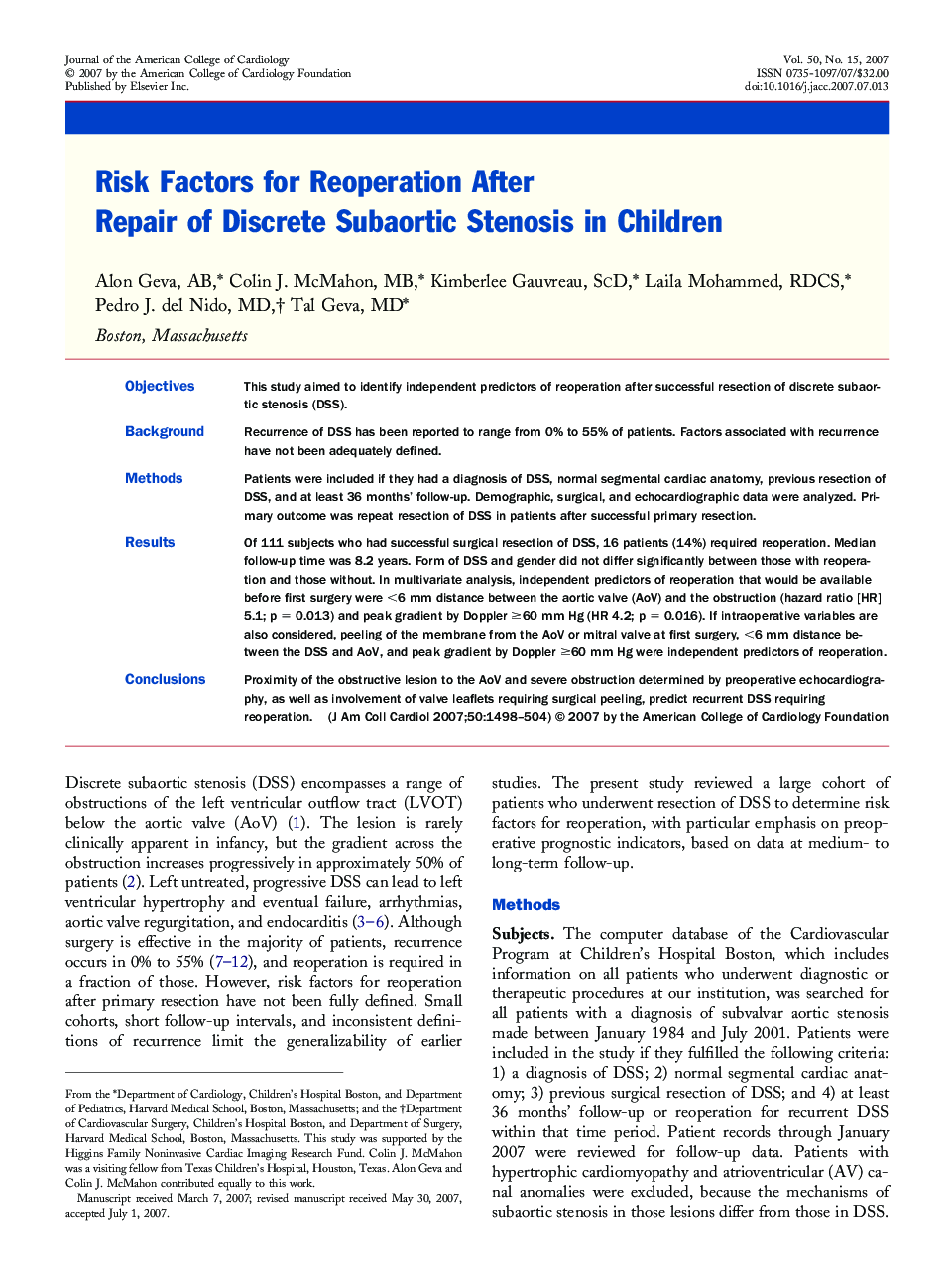| Article ID | Journal | Published Year | Pages | File Type |
|---|---|---|---|---|
| 2950933 | Journal of the American College of Cardiology | 2007 | 7 Pages |
ObjectivesThis study aimed to identify independent predictors of reoperation after successful resection of discrete subaortic stenosis (DSS).BackgroundRecurrence of DSS has been reported to range from 0% to 55% of patients. Factors associated with recurrence have not been adequately defined.MethodsPatients were included if they had a diagnosis of DSS, normal segmental cardiac anatomy, previous resection of DSS, and at least 36 months’ follow-up. Demographic, surgical, and echocardiographic data were analyzed. Primary outcome was repeat resection of DSS in patients after successful primary resection.ResultsOf 111 subjects who had successful surgical resection of DSS, 16 patients (14%) required reoperation. Median follow-up time was 8.2 years. Form of DSS and gender did not differ significantly between those with reoperation and those without. In multivariate analysis, independent predictors of reoperation that would be available before first surgery were <6 mm distance between the aortic valve (AoV) and the obstruction (hazard ratio [HR] 5.1; p = 0.013) and peak gradient by Doppler ≥60 mm Hg (HR 4.2; p = 0.016). If intraoperative variables are also considered, peeling of the membrane from the AoV or mitral valve at first surgery, <6 mm distance between the DSS and AoV, and peak gradient by Doppler ≥60 mm Hg were independent predictors of reoperation.ConclusionsProximity of the obstructive lesion to the AoV and severe obstruction determined by preoperative echocardiography, as well as involvement of valve leaflets requiring surgical peeling, predict recurrent DSS requiring reoperation.
